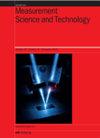A Cross-Domain Intelligent Fault Diagnosis Method Based on Multi-source Domain Feature Adaptation and Selection
IF 3.4
3区 工程技术
Q1 ENGINEERING, MULTIDISCIPLINARY
引用次数: 0
Abstract
Although fault diagnosis methods integrating transfer learning are research hotspots, their ability to handle industrial fault diagnosis problems with large domain differences still needs to be improved. A multi-source domain feature adaptation and selection (MDFAS) method is presented to address the issues of domain mismatch and domain negative transfer. The method integrates the top-level network parameter transfer strategy with the 2D Convolutional Neural Network (2DCNN) backbone network to acquire the target domain feature extractor quickly. Multiple feature adaptive extractors (FAEs) are constructed using a multi-branch structure to align the source and target domain's feature distributions, respectively. The inter-domain distance computed by multi-kernel maximum mean discrepancy (MK-MMD) is embedded in the FAEs loss function to improve the inter-domain matching degree. Based on the information gain of the adaptively integrated features, the ensemble adaptive selection is performed on the extracted feature matrices to exclude the negative transfer feature. Finally, the effective feature matrix is input into the diagnosis classifier for classification. Cross-domain fault diagnosis experiments are developed based on the data set gathered from several types of rotating machinery operated under varied working conditions. The experimental results show that the proposed method outperforms the existing intelligent fault diagnosis methods in terms of fault detection accuracy, generalization, and stability.基于多源领域特征适应和选择的跨领域智能故障诊断方法
尽管集成迁移学习的故障诊断方法是研究热点,但其处理领域差异较大的工业故障诊断问题的能力仍有待提高。本文提出了一种多源域特征适应和选择(MDFAS)方法,以解决域不匹配和域负迁移的问题。该方法将顶层网络参数转移策略与二维卷积神经网络(2DCNN)骨干网络相结合,快速获取目标域特征提取器。利用多分支结构构建多个特征自适应提取器(FAE),分别对齐源域和目标域的特征分布。多核最大均值差异(MK-MMD)计算的域间距离被嵌入 FAEs 损失函数,以提高域间匹配度。根据自适应集成特征的信息增益,对提取的特征矩阵进行集合自适应选择,以排除负转移特征。最后,将有效特征矩阵输入诊断分类器进行分类。跨域故障诊断实验是基于从几种在不同工作条件下运行的旋转机械中收集的数据集开发的。实验结果表明,所提出的方法在故障检测准确性、泛化和稳定性方面优于现有的智能故障诊断方法。
本文章由计算机程序翻译,如有差异,请以英文原文为准。
求助全文
约1分钟内获得全文
求助全文
来源期刊

Measurement Science and Technology
工程技术-工程:综合
CiteScore
4.30
自引率
16.70%
发文量
656
审稿时长
4.9 months
期刊介绍:
Measurement Science and Technology publishes articles on new measurement techniques and associated instrumentation. Papers that describe experiments must represent an advance in measurement science or measurement technique rather than the application of established experimental technique. Bearing in mind the multidisciplinary nature of the journal, authors must provide an introduction to their work that makes clear the novelty, significance, broader relevance of their work in a measurement context and relevance to the readership of Measurement Science and Technology. All submitted articles should contain consideration of the uncertainty, precision and/or accuracy of the measurements presented.
Subject coverage includes the theory, practice and application of measurement in physics, chemistry, engineering and the environmental and life sciences from inception to commercial exploitation. Publications in the journal should emphasize the novelty of reported methods, characterize them and demonstrate their performance using examples or applications.
 求助内容:
求助内容: 应助结果提醒方式:
应助结果提醒方式:


